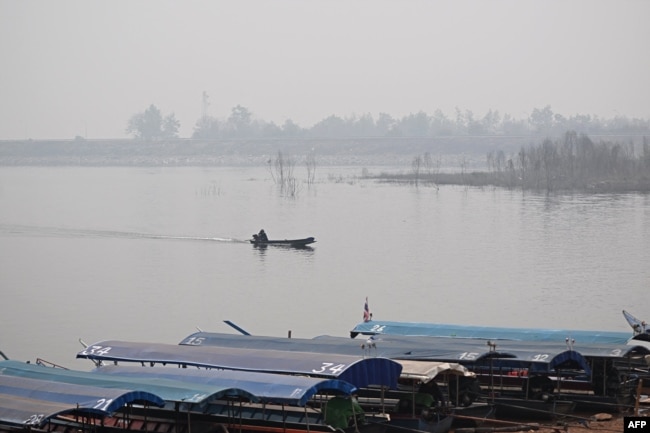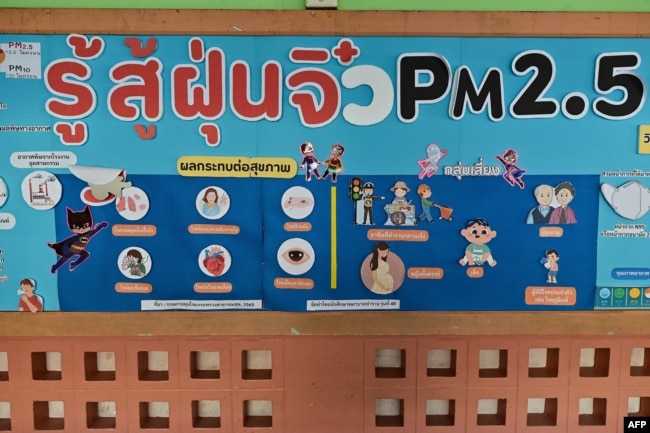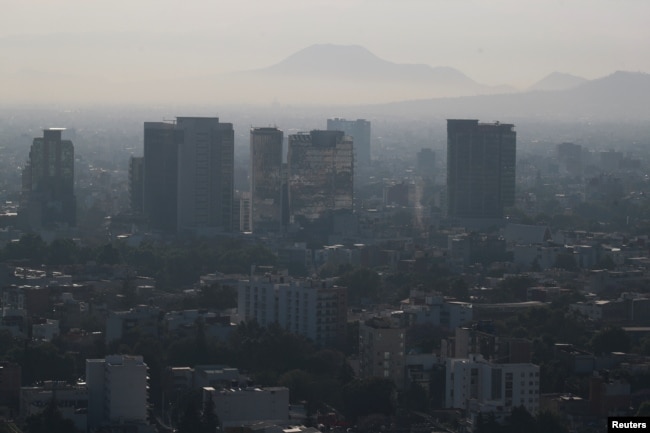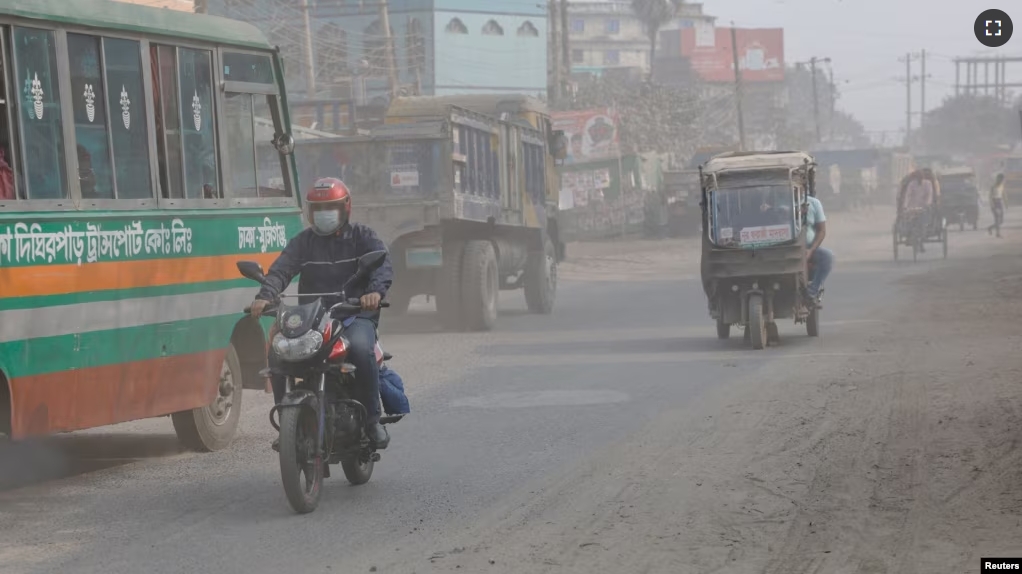Information from this year’s IQAir World Air Quality Report shows only seven countries met the World Health Organization’s (WHO) pollution recommendations in 2023.
The report said the five countries with what it called the lowest air quality had particle levels at least nine times higher than what the WHO recommends.
Three South Asian countries – Bangladesh, Pakistan and India – had the world’s lowest air quality, the report said.
The information comes from the Swiss company IQAir, which makes air quality-related products. The report used measurements from over 30,000 stations across 134 countries.
IQAir uses the WHO standard of PM2.5 to measure the size of breathable pollutant particles in the air. The PM2.5 measurement means the particles are 2.5 microns or less in diameter. The diameter of human hair, for example, is about 30 times larger than a particle of 2.5 microns.

In Bangladesh, the concentration of PM2.5 particles reached 79.9 micrograms per cubic meter in 2023. In Pakistan, the number was 73.7. The WHO recommends a reading of no more than five micrograms.
Christi Chester Schroeder oversees air quality science for IQair. She said South Asia’s geography influences its air quality. She warned about the future.
“Because of the climate conditions and the geography…the pollution has nowhere to go,” she said.
She added that because of “agricultural practices, industry and population density…it really does look like it is going to get worse before it gets better.”
India’s level was 54.4, Tajikistan in Central Asia was 49.0 and Burkina Faso in West Africa was the fifth-most polluted nation at 46.6.

The only countries that met the WHO pollution recommendations were Australia, Estonia, Finland, Grenada, Iceland, Mauritius and New Zealand.
Of the 134 countries and regions measured, 124 had higher levels than called for in the WHO pollution guidelines.
Both Bangladesh and India’s air quality decreased in 2023. In 2022, India was eighth and Bangladesh was fifth.
Firoz Khan is an air pollution expert at North South University in Dhaka, Bangladesh. He said 20 percent of the early deaths in the country are caused by air pollution. He said spending on pollution-related healthcare was equal to four to five percent of the nation’s economy.
In India, New Delhi’s measurement of 92.7 micrograms made it the most-polluted capital city.
China’s pollution level increased last year for the first time after five years of decreases.

Three countries that were on the list in 2022 were removed in 2023 because of problems collecting information. They were Chad, Iran and Sudan. Chad was the world’s most polluted country last year.
IQAir provides its report each year. But many countries do not have public air quality measurement systems. Christa Hasenkopf is the director of the Air Quality Life Index at the University of Chicago. She said that is a big problem, “considering the large potential benefits and relatively low cost.”
She suggested a global effort to make air quality information more available, “especially in places where the health burden of air pollution has been largest.”
I’m Dan Friedell.
Dan Friedell adapted this story for Learning English based on a report by Reuters.
_________________________________________________
Words in This Story
diameter –n. the distance across a circle or round object
potential –adj. possible or able to be realized but not real or existing now
burden –n. responsibilities, costs or harms from some action, activity or condition
